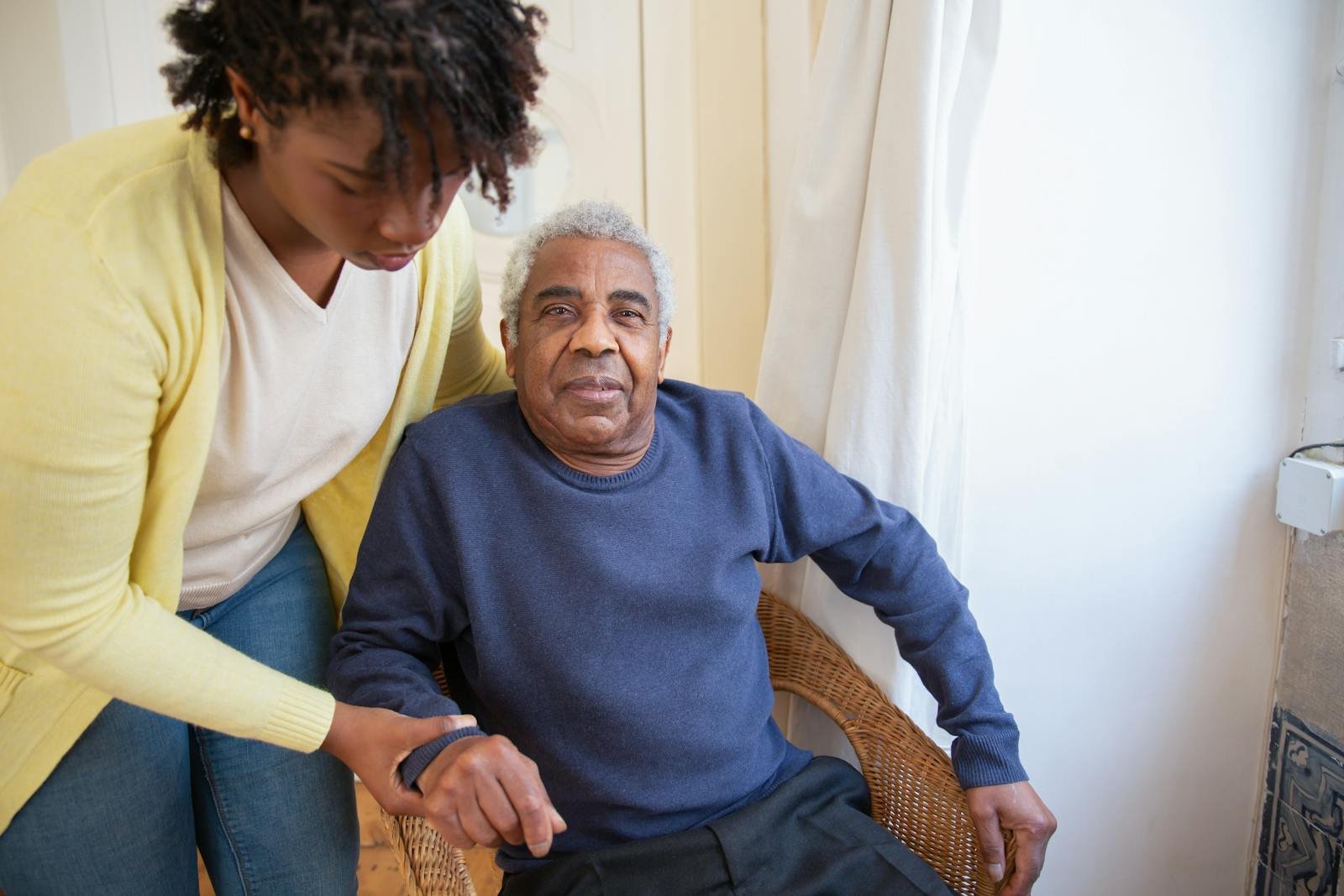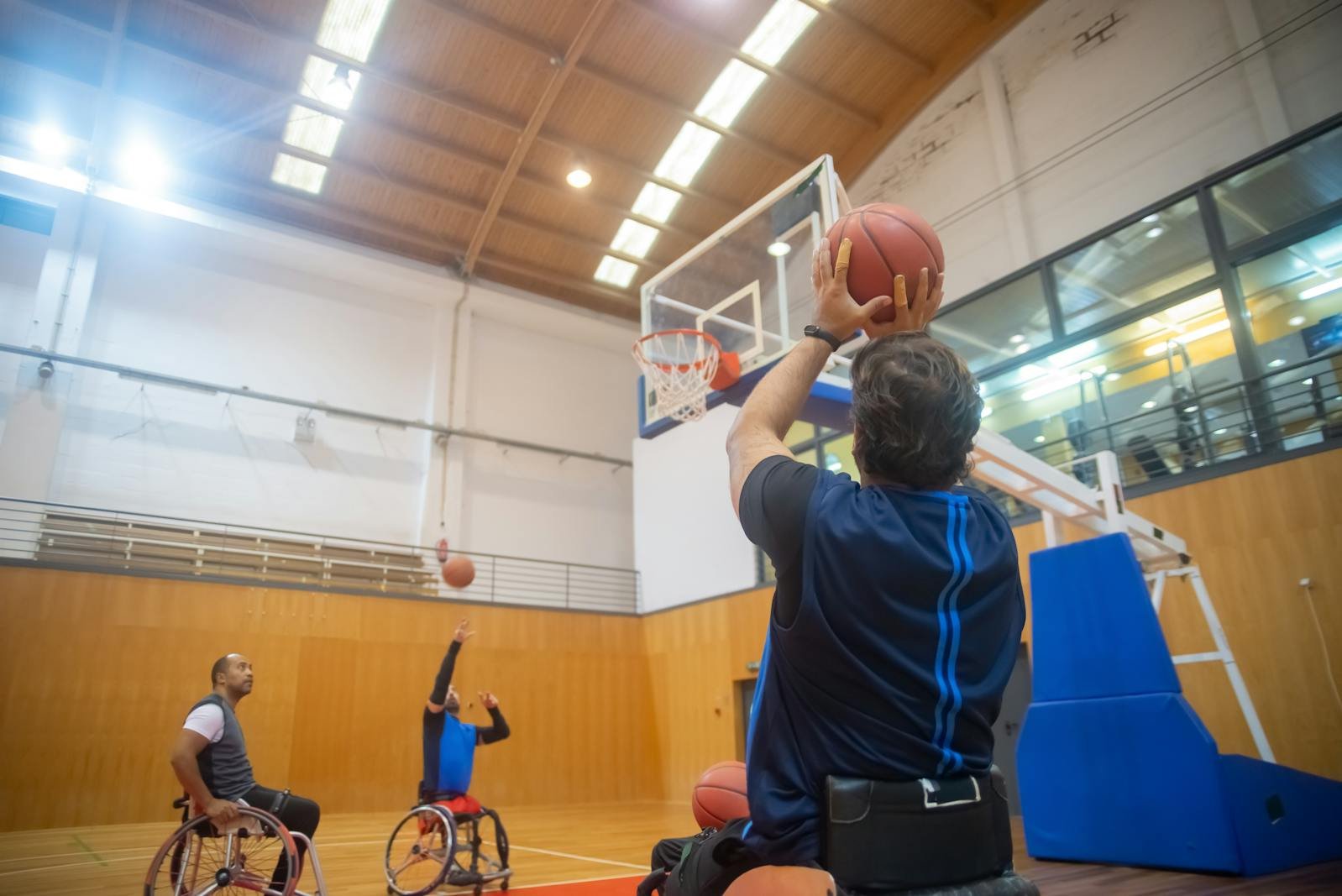Impact, Collaboration, Excellence
Our aim is to enhance your productivity and performance by providing ‘best in class’ training to your employees; helping them reach their full potential and lead teams to achieve an ‘outstanding’ service.
At 3Spirit all our programmes, delivery methods, support and resources are tailored to the needs and requirements of each of our clients. We firmly believe that to create true impact from our training, we need to adapt to the unique challenges you face.
Programmes
Our short course Care programmes, focused on 7 primary areas have been engineered over many years to provide impactful solutions to complex challenges in the social care workforce. At the core of our organisation is a drive to deliver industry leading training that is centred upon pioneering research and best practice. This has led our organisation to move away from the traditional ‘courses for learning’ to ‘performance driven learning’ ensuring that are programmes are engineered for maximum impact within the businesses they support.

Communication and Dementia
Identify ways to assess the communication strengths and abilities of the individual with dementia
State how dementia can impact on communication skills
Identify other factors that might influence the individual’s ability to communicate
Describe a range of communication strategies that could be adopted at different stages of dementia
Describe techniques to overcome the barriers to communication
Describe how information about an individual’s life history can strengthen communication
Apply active listening skills
Explain how assumptions and beliefs influence effective communication
Explain how challenging behaviour is a form of communication
Explain the role of mouth care in supporting communication

Sexuality, Intimacy and Dementia
Define the terms ‘intimacy’ and ‘sexuality’.
Explain how society’s attitudes towards sexuality, and ageing can lead to the restriction of human rights in the care setting
Describe how dementia may impact on feelings of intimacy and sexual behaviour
Identify conditions that may impact on sexual expression/activity in older people
Identify the powers and limits of legislative frameworks in supporting capacity, consent and sexual relationships when a person has dementia
Give examples of poor practice in your own organisation in relationship to intimacy, sexuality and dementia
Describe different ways an individual can express sexuality and how individual preferences may be supported
Explain how to support an individual to keep safe, to minimise sexual exploitation and instances of abuse
Describe strategies for supporting sexuality, and intimacy for people with dementia living in services.

Dementia Environment
Describe how changes to the brain effect the way an individual navigates an environment
Describe how to adapt the environment to minimise difficulties related to sensory impairment
Explain how good design promotes self-identity and self esteem
Identify what ‘home’ means to a person
State the factors associated with design that can support orientation
Identify the tools and principles that can be used to audit the dementia environment
Describe changes that can be made to minimise the risk of falls
Identify a range of assistive technologies for dementia
Identify factors to consider in remote monitoring software
Identify technologies that can aid memory
Review the evidence on using assisted robots in dementia care

Health Wellbeing and Dementia
Explain why it is important to maintain good physical and mental health
Describe how to identify a person’s heath needs including nutrition, hydration, risk of falls, sleep and pain
List the signs of delirium and the signs of dementia, recognising delirium is a medical emergency
Describe the possible impact, including psychological and social impact, of incontinence
Describe the potential causes and impact of loneliness and the importance of maintaining social engagement
Describe possible ways to support ADL’s in a person centred manner

Mental Health & Dementia
Describe what wellbeing means in dementia care
Identify the differences and similarities between mental health conditions and dementia
Identify common mental conditions that are experienced by people living with dementia
Explain the links between trauma and dementia
Explain how cognitive loss might impact on managing emotions and developing coping strategies/ resilience
Describe the social, psychological, physical and environmental factors that impact negatively on mental health
Describe the challenges of managing co-morbid conditions in dementia
Identify practical tools to assess and record mental wellbeing
Describe simple strategies to promote good mental health within own role
Identify ways technology can help or hinder mental wellbeing

Tier 2 Dementia Training
Explain how values, beliefs and misunderstandings about dementia can affect attitudes towards individuals and their families
Identify the potential mental health needs of someone living with dementia
State how dementia can impact on communication skills
Identify ways to support ‘behaviours of concern’
Describe a range of communication strategies that may be adopted
Describe the potential causes of, and impact of loneliness and the importance of maintaining social engagement
Describe common co-existing conditions with dementia and why managing these identified conditions may present additional challenges (when supporting a person with dementia)
Describe person centred strategies and referral options to support a person with dementia
Describe how to adapt the environment to minimise potential challenges
Identify ways in which to work positively with family carers and significant others

Dementia Awareness
List the main requirements of legislation and policies that are designed to promote the human rights, inclusion, equal life chances and citizenship of individuals with dementia
Explain how positive attitudes towards those with dementia will improve the care and support they receive
Describe the social model of disability and how it underpins positive attitudes towards disability
Describe how someone may feel if they have dementia
Describe how someone may feel if they have dementia
Explain how dementia and associated conditions can impact on support needs
Describe how to make adjustments to include a person with dementia

Later Life Autism
Identify the potential impacts of ageing on Autistic adults
Sensory loss and sensory needs
Mobility, social isolation, and connection
Comorbid conditions
Mental health and resilience
Describe potential advantages of ageing for an autistic person
List the barriers to accessing health and social care
Explain practical ways of promoting health and wellbeing

Mental Health & Autism
Describe the Neurological differences in people with Autism
Identify the most common Mental Health Conditions that occur in Autism and describe how symptoms may present in individuals
Explain the impact that Inertia, Executive Functioning and Catatonia can have on Autism and subsequent Mental Health Diagnosis
Describe the term Diagnostic Overshadowing and relate this to misdiagnosis
Describe the types of assessment tools that can be used during Mental Health Assessments to support people with Autism and a Learning Disability
Detail how to support individuals with a Mental Health need with the framework of the NICE guidelines

Understanding Autism in Relation to Social Work Practice
Describe how and why Autism impacts differently from individual to individual across the ‘spectrum’ of the condition
Identify communication and engagement differences and the potential impact on assessment, support planning, and review processes
Identify a range of communication and practical tools/strategies to effectively support the individual
Describe how legislation and guidance can support the development of person-centred approaches and uphold the rights of Autistic people
Identify the potential risks/safeguarding considerations that may arise from differing situations, perspectives and support needs

Sensory Differences in Autism
Identify the 8 senses
Explain how sensory differences can impact on the lives of Autistic people
Describe how sensory activities can support both calming and alerting strategies
Explain the purpose of a sensory assessment and sensory profile
Describe how a sensory diet supports sensory balance

Autism & Safeguarding
Identify the potential safeguarding risks that may apply to Autistic people
Identify the potential strengths that Autistic people may have to promote resilience
Explain how to use a strengths-based approach in promoting personal safety
Explain how to use a strengths-based approach in promoting personal safety
Describe practical ways to support an Autistic person to maintain personal safety

Autism & Learning Disabilities Support in Practice
Define the term ‘learning disability’/’intellectual disability’
Describe the difference between learning disability and autism
Explain how to adapt communication appropriately to support people with a learning disability or autism
Identify conditions that commonly co-occur
Describe labels and common myths and how these may impact on own practice
Describe practical strategies to reduce anxiety in relation to medical investigations and interventions
Explain how legislation and guidance provide a framework for good practice
Describe ways in which services could be adapted including reasonable adjustments, hospital passports, improved accessibility etc
Explain the importance of annual health checks

Anti-Discriminatory & Anti Oppressive Practice Awareness
Explain how the Equality Act 2010 applies to your own role
Give examples of anti-discriminatory within the context of your work
Give an example of anti-oppressive practice
Define micro-aggressions in the workplace
Identify ways to challenge anti-discriminatory and anti-oppressive practice
Identify the long term and short-term effects of discrimination
Describe ways of being able to reflect on own practice

Gender Identity & Gender Diversity
Explain gender identity and gender diversity: what it means to be trans or gender non-conforming
Describe some of the challenges faced by trans: isolation, bullying and discrimination, family issues, social situations, mental health, transitioning while at school/work etc
Give an example of the specific experience of a transgender person who has accessed or used mental health services (via case studies or lived experience)
Identify appropriate language and terminology
Describe legal framework for working including Equality Act, hate crime incidents, transphobia
Explain transition pathways, including healthcare
Identify sources of information to improve practice

Promoting Conscious Inclusion & Tackling Implicit Bias
Promoting Conscious Inclusion & Tackling Implicit Bias
Explain how implicit bias leads to discrimination
Explain how good design promotes self-identity and self esteem
Explain the role of implicit bias in relation to equality, diversity and conscious inclusion, and their role in promoting anti-oppressive practice
Describe how social care can adopt conscious inclusion by tackling implicit bias

Respond to Racism
Give example of racism
Compare and contrast what it means to be ‘anti-racist’ and ‘non-racist’
Describe both covert and overt racism, including microaggressions
Explain role of conscious inclusion and how to counteract bias
Give examples of ‘white privilege’, ‘white fragility’ and ‘white saviourism’
Identify strategies to plan and prepare for difficult conversations
Describe the role of positive language when challenging racism
Describe ways to become more self-aware and able to have honest, reflective conversations with self and others
Explain the importance of seeking feedback from multiple perspectives
Identify strategies to turn fear into action
Identify resources that can aid workplace conversations
Explain the term ‘allyship’ in the context of racism and how to be an effective ally
Describe how to effectively manage a complaint of racism
Explain how to support someone who has experienced racism

How to be an Effective Ally
Explain what an ally is and why they are necessary
Describe what allyship is in the context of white privilege
Identify ways to continually develop self-awareness and reflect
Explain the challenges and personal benefits of being a good ally
Explain how to have courageous conversations
Compare how allyship differs from mentoring/coaching and other forms of support
Explain how to be a good ally in context of organisational process and practice
Identify sources of support for further information

Introduction to Equality, Diversity & Inclusion in the Workplace
Explain how the Equality Act 2010 applies to own role
Give examples of anti-discriminatory practices within the context of own work
Give an example of anti-oppressive practice
Define micro-aggressions in the workplace
Identify ways to challenge discriminatory and oppressive practice
Identify the long term and short term effects of discrimination
Describe ways of being able to reflect on own practice

Exploring Gender Identity & Gender Diversity
Explain ‘gender identity’ and ‘gender diversity’ and what it means to be ‘trans’ or ‘gender non-conforming’
Describe the legal framework for working including the Equality Act 2010 and hate crime
Describe some of the challenges faced by the LGBTQi community including isolation, bullying and discrimination, family issues, social situations, mental health in the workplace, challenges faced by older people and the process of transitioning
Identify appropriate language and terminology
Describe strategies for inclusive practice
Identify sources of information to improve practice

Equality & Diversity in Recruitment
Describe the principles of equality and diversity in relation to recruitment
Describe how to recruit in a fair and safe manner (UK and International)
Identify the potential consequences of inequitable and unsafe recruitment practices
Identify potential cultural considerations in recruitment and selection
Describe practical ways to embed Fundamental British Values in care practice
Explain how unconscious bias can have a negative impact throughout the recruitment process
Identify a range of tools that support different parts of the recruitment process

Equality & Diversity for Managers (Updated for Herts CC)
Explain the legal requirements underpinning equality, diversity, and inclusion and the effects of discrimination
Describe the role and responsibilities of a manager in relation to equality, diversity and inclusion
Describe how the supervision process can support equality, diversity, and inclusion in practice
Specify the language and behaviours required of a manager in leading by example
Identify data that could be collated in your organisation to monitor equality, diversity, and inclusion
Identify ways to monitor and report equality, diversity, and inclusion outcomes to stakeholders

Embracing Cultural Differences
State the business case for equality, diversity, and inclusion
Describe the different stages of the Continuum of Cultural Competency
Describe ‘cultural competence’ and ‘intersectionality’
Describe how systems and practices can lead to inequality
Identify the long-term and short-term effects of discrimination
Identify practical ways to work with stakeholders to co-design and deliver culturally relevant services
Describe how a sense of belonging can be fostered within teams, ensuring that people bring their very best to work and provide the best for those they care for
List positive actions that can be taken to create a culturally competent workforce

MCA and DOL’s
Understand the 5 principles of the act
Define the term ‘mental capacity’
Recognise who is affected by the provisions of the act
Identify when it is appropriate to undertake assessment of capacity
Understand key roles in the assessment process
State the purpose and limits of the DoL Safeguards
Describe how relevant agencies play a role in the DoL Safeguards
Define the role of the supervisory body, managing authority and inspectorate
Sate the threshold of DoLS applications
State how key issues of risk, consent and capacity influence working practices and reporting procedures

Care Act and National Eligibility Criteria
Identify strategies for ‘critical thinking’
Explain how to lawfully balance the views of the person with the resources available to the council
Describe how “person centred approaches” fit with the statutory planning process
Explain the process of analysis, evidence informed decision making, critical thinking and reflection within the planning process
Explain the importance of the specific situation in decision making
Describe ways to plan creatively to best meet the outcomes that are important to the person

No Recourse to Public Funds
Explain the terminology used in relation to persons from abroad
Describe how to apply the prohibitions to social care provisions
Explain the impact that a person’s immigration status may have on the Local Authority’s obligations to adults
Identify how an immigration status may limit local authority obligations in:
– assessment, including Human Rights considerations
– provision, particularly of accommodation-based support
Safeguarding adults at risk, including new duties owed under the Modern Day Slavery Act 2015
Explain the wider duties owed by the Local Authority to children, care leavers and families
Explain the NHS role in providing healthcare to persons from abroad
Identify alternative means of support to signpost individuals to if they are not eligible for support under the Care Act 2014

Ordinary Residence
Explain the legal framework for ascertaining a person’s ordinary residence under:
– The Care Act 2014, including safeguarding functions
– The Deprivation of Liberty Safeguards Procedure
– The Mental Health Act 1983 [as amended]
– The Children Act 1989, including for those in transition to adult services
Identify relevant case law that supports the factual and legal basis for determining ordinary residence
Describe the roles and responsibilities of the local authority and relevant partners where there is a dispute over funding for an adult with health or care and support needs
Identify key critical analysis skills that can support defensible decision making

Advanced MCA
Describe the main principles of the act and who is affected by these provisions
Identify when it is appropriate to undertake assessment of capacity
Describes ways of completing a mental capacity assessment that encourages inclusive practice
Describe key roles in the assessment process, including advocacy
Describe how to ensure that you are working in the persons best interests
Identify how to report and record in a way that best evidence decisions
State the purpose, thresholds and limits of the DOL’s, and proposed changes
Describe how relevant agencies play a role in the DOLS safeguards
Define the role of the supervisory body, managing authority and inspectorate
State how key issues; risk, consent, rights and capacity influence working practices and reporting procedures

Coroners Court
Explain the responsibilities for reporting a death to the coroner
Explain the powers of a Coroner and the role juries play in Inquests
Describe the investigatory process of an inquest
Identify the order of events in court and the roles of those involved in proceedings
Explain the types and purpose of evidence
Describe how to prepare to give clear, honest and objective evidence
Explain how to make appropriate use of supporting primary evidence

Advance Care Planning (Direct Support Practitioners)
Describe the legal framework surrounding Advance Care Planning
Explain what advance care planning and advance directives are
Identify the benefits of Advance Care Planning
Explain how information will be gathered for an Advance Care plan and with whom and when this might be shared

Strength-Based Care and Support Planning
Explain strength-based practice in care and support planning and risk assessment and how this applies to own role
Identify the drivers in culture and processes that can default workers and citizens to a deficit-based approach
Describe strategies for overcoming expectations for a deficit-based approach by using co-production techniques
Explain how strengths-based approaches are underpinned by the Care Act
Explain the benefits of a ‘strengths based ‘approaches to care planning and risk assessment
Describe ways to incorporate ‘strengths based ‘approaches into the risk assessment
Explain best practice principles in recording decisions and obtaining consent

Advance Care Planning (Social Work and Allied Professionals)
Describe the legal framework surrounding Advance Care Planning
Identify the role of social work in advance care planning
Discuss people’s attitudes and fears towards death and dying; recognising it is unique to everyone
Describe communication techniques to tackle supporting individual facing poor or uncertain prognosis and end of life
Explain how to support decisions for people without capacity
Explain ways to ensure accessibility of information across agencies to ensure individual preferences are known

Case Recording
Explain why recording is important and state its purpose in various settings
Describe the professional standards and legal requirements regarding case recording in social care practice
Explain how the case recording policy, procedure and guidance support compliance with the legal framework and professional standards in relation to social care practice including defensible decision making
Identify circumstances that could potentially compromise case recording standards
Identify the key elements that classify good practice in recording

Strength Based Assessment
Describe how ‘strength-based approaches’ fit with the customer journey through the statutory assessment process
Explain ways to prevent and delay care and support needs using a strengths-based approach
Describe a range of strength-based approaches and tools that can be used during the assessment process
Explain how to use a strength-based approach to determine eligible and personal outcomes
Explain how strengths-based interventions support the person’s outcomes and aspirations identified in the assessment at the care and support planning stage
Explain ‘professional curiosity’ in the context of assessment
Explain the importance of being able to come to, and record, a reasoned, defensible decision

Strength Based Reviews
Describe key elements of a quality review process, including preparation, cross referencing of relevant background materials and key information that will need to be gathered for a quality review
Describe how “strength-based approaches” fit with the customer journey through the statutory review process
Describe strength-based tools that can be used to reflect on whether a person’s care and support plan is working and what might need to change
Describe strength-based tools that can be used to reflect on whether a person’s care and support needs have changed
Explain ‘professional curiosity’ in the context of reviews
Explain how to balance the views of the person with the resources available to the council to meet outcomes and aspirations
Explain how a person’s personal and community assets can contribute to a care and support plan to meet outcomes and aspirations
Explain the importance of being able to come to, and record, a reasoned, defensible decision

MCA & DOLS for Managers
Describe the main principles of the act and who is affected by these provisions
Identify when it is appropriate to undertake assessment of capacity
Explain the role of MCA in context of consent to care and treatment, and GDPR
Explain good practice principles in recording MCA assessments and BIA
Describe lawful approach to least restrictive
Explain the COP and its role in Lasting Powers of Attorney, Power of Attorney, enduring Power of Attorney, Appointee ship and Deputyship
Explain Advance Decisions and Living Wills
Describe key roles in the assessment process, including advocacy
Describe the interface between MCA and Safeguarding
Explain the expected changes from DoLS to LPS

Practice Implementation of the Care Act Wellbeing Principle
Describe the involvement duties in the Care Act including suitable persons, advocates, and other people you may be asked to involve
Explain how to positively work within person centred approaches considering the interface between the lawful balance of the person’s views and resources available to the council
Describe how critical thinking, analysis and defensible decision making can effectively support evidence-based eligibility decisions and the planning process
Explain how to practically deliver person centred outcomes through the strength-based approach to assessment
Describe how to record eligibility decisions and assessments effectively

Holding Constructive Conversations
Identify what information to prepare and be able to plan in advance
Describe ways to communicate information effectively
Be able to keep control of yourself during the conversation; understand your own reactions and develop effective responses
Describe ways to build rapport
Explain how to structure the conversation
Describe how to deal with emotional responses sensitively and effectively
Explain how to come to an agreement, including follow up action and support
Understand how to end a conversation when there is no agreement

Positive Risk Assessment for Support Workers
Describe the main principles of MCA and how this applies to positive risk taking
List the principles of positive risk taking
Identify the barriers to positive risk taking
Explain own role in supporting positive risk taking
Be able to complete a Risk Assessment form

Strength-Based Care and Support Planning
Explain strength-based practice and how this applies to own role
Identify techniques that can be used to support strengths-based conversation
Identify challenges to implementing strength-based practice
Outline dynamic approaches to positive risk-taking
Describe how to evidence and record consent

Positive Risk Taking
Explain why people with disabilities may be discouraged or prevented from taking risks
Identify legislation which underpins Positive Risk Taking
Explain how national and local policies and guidance provide a framework for decision making to promote independence
Explain the principles and process of developing a person-centred approach to risk assessment
Describe the different stages of a risk assessment
Explain how to support individuals to recognise and manage potential risk

Loss, Bereavement & Wellbeing (Creating Compassionate Cultures & Dealing With Loss)
Define loss and bereavement and the process of grief
Identify a range of support mechanisms when caring for someone through loss and bereavement
Identify the potential impacts of loss and bereavement in a work setting
Identify ways to manage own wellbeing through experience of loss
Explain your rights and responsibilities in relation to mental health and wellbeing in the workplace
Analyse how personal wellbeing impacts on own role, behaviour and on others
Describe factors and indicators of stress and anxiety and strategies for managing stress and anxiety
Explain the relationship and differences between personal and professional resilience

Loss & Bereavement
Describe the process of grief
Identify a range of theories in relation to grief
Explain the importance of emotional intelligence and sensitive communication when working with families/friends following a bereavement
Identify practical ways to support people who have experienced bereavement/loss
Describe the importance of cultural competence in relation to bereavement and loss
Describe the relationship between grief and trauma
Describe the impact of compassion fatigue
Identify a range of bereavement services available within Hertfordshire

Mental Health Awareness
Define mental wellbeing and mental illness
Identify possible causes of mental illness
Describe risk and protective factors
Identify signs that may indicate that a person’s mental health is deteriorating
Describe mental health conditions including anxiety, stress, phobias, depression, bi-polar affective disorder, schizophrenia, personality disorder, eating disorders, and dementia
Describe what it may be like to experience mental illness

Psychosis
Describe the various models of mental disorder
Explain the umbrella term of Psychosis
Identify the core elements of Psychotic experience
Describe the possible causes of Psychosis including stress, vulnerability and trauma
Describe Medical, Social and Psychological strategies for working with Psychosis
Identify possible relapse indicators
Describe the process of developing a clinical crisis care plan
Identify appropriate safety and containment strategies as appropriate (including use of Mental Health Act and Medication)

Impact of Parental Substance Misuse from Parents on Young People
Describe the potential interaction between domestic / sexual violence, mental health and substance misuse (toxic trio)
Describe the impact of parents/carers mental health and substance abuse on the wellbeing and development of the child
Identify signs of sexual, physical, or emotional abuse, or neglect including domestic abuse, sexual exploitation

Substance Misuse
Describe the impact of substance abuse on individuals and families
Identify signs that someone may be experiencing substance misuse
Explain the impact of substance misuse on individuals who are experiencing a mental illness
Identify risks associated with substance use in mental health
Describe the role/impact of trauma, stress and vulnerability
Explain the transtheoretical model of change
Explain the role of Motivational Interviewing
Identify the key legal themes in the MHA, MCA and when they may apply
Outline key national guidance and best practice in this area
Explain the importance of partnership working and identify ways to work effectively with other services to provide care for this client group

Trauma Informed Practice
To understand the term ‘trauma’ and how to identify it through the trauma cycle
To understand the physiology and neurobiology of trauma
To gain insight into and understanding of the impact of traumatic experience on an individual
To understand the implications of trauma for mental health, emotional well-being and behaviour
To develop skills and understanding to support those who have experienced traumatic events and promote protective factors
To understand the importance of self-support and professional strategies

Suicide Prevention
Identify the signs of someone experiencing mental distress, including self-harm
Describe suicide and self-harm throughout the life course and how stigma, discrimination and isolation can contribute to it
Identify common mental conditions that are experienced by people living with dementia
Explain the importance of an early intervention or suicide intervention model including risk assessment and care planning
Identify appropriate interventions in relation to suicide prevention
Describe targeted suicide prevention activities to reduce suicidal behaviour in specific high risk groups

Understanding Self-Neglect and Hoarding Behaviours
List the legal framework and guidance that applies to self-neglect and hoarding behaviour
Describe the signs, symptoms, and long-term effects of self-neglect
State research findings and good practice relevant to self-neglect
Explain ways to positively engage with people who self-neglect and/or display hoarding behaviours in relation to own role
Explain the reasons why an individual may display hording behaviours
Explain the links between hoarding, mental health, and self-neglect
Identify when to initiate safeguarding procedures and how Making Safeguarding Personal can support individuals proactively and reactively

Safeguarding for Managers
Describe the aims of safeguarding and Hertfordshire priorities
Explain the legislative framework for safeguarding
Explain how the six key principles underpin safeguarding
Explain ways to prevent abuse including:
– Utilising performance management systems effectively
– Developing professional curiosity and tackling unconscious bias with safeguarding
– Strategies to address a ‘closed culture’
Describe the role of the manager in an enquiry
Identify the 10 types of abuse
Describe the role of the safeguarding board
Explain how to respond to and report abuse
Describe how to ‘Make Safeguarding Personal’

Domestic Abuse & MARAC
Identify the types and indicators of domestic abuse
Explain national policy and local initiatives
Describe the impact of domestic abuse on the individual and family
Explain the cycle of abuse
Describe how the domestic abuse impacts on a child’s social, emotional and behavioural development
Demonstrate how to complete a DASH risk assessment

Cuckooing
Describe the term ‘cuckooing’
Identify the legislation that applies to ‘cuckooing’
Explain how ‘cuckooing’ relates to social care practice
Describe the connections between cuckooing, exploitation, and safeguarding practice
Explain who to contact if you suspect an adult has been or has the potential to be targeted

Developing Knowledge and Skills in Safeguarding and Enquiries
Explain the legislative framework for safeguarding
Describe how ‘Making Safeguarding Personal’ supports rights when supporting people to safeguard themselves
Describe how to identify and respond to new and accumulating risk
Explain how positive risk-taking supports defensible decision making
Describe how to utilise different legal framework where a person with care and support needs self-neglects, such as equality, mental capacity, safeguarding and human rights
Analyse the challenges of applying professional curiosity in the context of safeguarding
Describe the process of enquiry
Analyse a SAR identifying the lessons learned and steps that can be taken to prevent recurrence

Enquiry Officer Refresher
Analyse how the Care Act and other laws promote a balance between wellbeing and protection
Give examples of how to use the legal framework for making decisions on the duty to carry out safeguarding adult enquiries
Identify how legal frameworks within safeguarding interact using a case study approach
Explain, through practical example, how to undertake a safeguarding enquiry and adopt ‘professional curiosity
Explain how cognitive bias affects decision making
Describe best practice approaches in interview skills
Explain how information gathering, and evidence evaluation supports report writing in relation to safeguarding
Describe the pan-London multi-agency adult safeguarding policy and procedures and making safeguarding personal project at RBK

Risk Assessment in Relation to Complex Cases
Identify the legal framework for risk taking in the Health and Social Care Sector
Describe how to work with the individual’s strengths when assessing risks
Explain the principle of proportionality as it relates to risks, rights, and safeguarding
Explain how to balance different perspectives on risk as part of partnership working
Describe the complexities of intersectionality in relation to risk
Explain how defensible decision-making supports a human rights approach to positive risk taking
Review mental capacity case law in relation to working practice

Enquiry Officer
Describe legislative and SET multi-agency safeguarding policy developments including Making Safeguarding Personal
Explain safeguarding enquiries in relation to the six principles
Describe the links between mental capacity and safeguarding, putting the individual at the centre of the process
Describe the role of staff within the safeguarding process and that of relevant agencies within safeguarding generally
Explain through practical examples, how to undertake a safeguarding enquiry and formulate a safeguarding plan
Explain best practice in information gathering and evidence evaluation to produce a written report with safeguarding outcomes
Explain the different types of advocacy and the ways to access these
Describe strategies to aid recovery and build resilience
Explain strategies for safeguarding where there is self-neglect or non-engagement where there is not consent, including issues of public interest and potential coercion
Describe establishment concern investigations
Explain the importance of defensible decision making and professional curiosity

SAM
Explain the SET multi-agency safeguarding policy and relevant case law
Describe the 4 stages of the safeguarding process
Describe the key roles in the safeguarding process
Analyse how the six principles link to the role of SAM and safeguarding process
Describe ways to support Enquiry Officers to co-ordinate and scope length and breadth of enquiry
Describe ways to support adults at risk and Make Safeguarding Personal
Describe how to analyse information and evidence and deliver a defensible decision using them to support learning
Explain the importance of defensible decision making and professional curiosity
Explain how to chair a best interest, strategy meeting and case conference with complexity
Describe how to identify risk
Implement risk reduction and deliver a safeguarding plan
Explain limits and responsibilities around information sharing
Identify best practice principles in undertaking a critical review of the enquirers report and findings
Identify where further support action is required in terms of Court of Protection or inherent jurisdiction and how to deal with disputes
Explain the criteria for SAR and ways to use them to support learning

Safeguarding L1
Explain the term ‘safeguarding adults’ and the roles and responsibilities within
List the main laws and local policies that underpin safeguarding
List the risk factors and indicators for the main types of abuse
Describe what constitutes harm and restrictive practices
Describe ways to prevent abuse through positive practice
Describe where to get information and advice on prevention and protection
Explain how to raise concerns and report abuse
Describe the actions to take if there are barriers in reporting abuse
Explain the importance of professional curiosity in safeguarding

Positively Supporting Distressed Behaviour
Define ‘distressed behaviour’ and why it may occur
Describe the impact of distress on the individual and those around them
Describe how compassionate environments can reduce levels of distress
Describe proactive and non-restrictive reactive interventions to reduce distress
Describe what recording must be completed following an incident of distress

Mental Health & Autism
Describe the Neurological differences in people with Autism
Identify the most common Mental Health Conditions that occur in Autism and describe how symptoms may present in individuals
Explain the impact that Inertia, Executive Functioning and Catatonia can have on Autism and subsequent Mental Health Diagnosis
Describe the term Diagnostic Overshadowing and relate this to misdiagnosis
Describe the types of assessment tools that can be used during Mental Health Assessments to support people with Autism and a Learning Disability
Detail how to support individuals with Mental Health needs with the framework of the NICE guidelines

Sensory Difference in Autism
Identify the 8 senses
Explain how sensory differences can impact on the lives of Autistic people
Describe how sensory activities can support both calming and alerting strategies
Explain the purpose of a sensory assessment and sensory profile
Describe how a sensory diet supports sensory balance

Understanding Autism in Relation to Social Work Practice
Describe how and why Autism impacts differently from individual to individual across the ‘spectrum’ of the condition
Identify communication and engagement differences and the potential impact on assessment, support planning, and review processes
Identify a range of communication and practical tools/strategies to effectively support the individual
Describe how legislation and guidance can support the development of person-centred approaches and uphold the rights of Autistic people
Identify the potential risks/safeguarding considerations that may arise from differing situations, perspectives and support needs

Autism and Learning Disability Support in Practice
Define the term ‘learning disability’/’intellectual disability’
Describe the difference between learning disability and autism
Explain how to adapt communication appropriately to support people with a learning disability or autism
Identify conditions that commonly co-occur
Describe labels and common myths and how these may impact on own practice
Describe practical strategies to reduce anxiety in relation to medical investigations/interventions
Explain how legislation and guidance provide a framework for good practice
Describe ways in which services could be adapted including reasonable adjustments, hospital passports, improved accessibility etc
Explain the importance of annual health checks

Later Life Autism
Identify the potential impacts of ageing on Autistic adults:
– Sensory loss and sensory needs
– Mobility, social isolation, and connection
– Comorbid conditions
– Mental health and resilience
Describe potential advantages of ageing for an autistic person
List the barriers to accessing health and social care
Explain practical ways of promoting health and wellbeing

Autism and Safeguarding
Identify the potential safeguarding risks that may apply to Autistic people
Identify the potential strengths that Autistic people may have to promote resilience
Explain how to use a strengths-based approach in promoting personal safety
Describe practical ways to support an Autistic person to maintain personal safety
